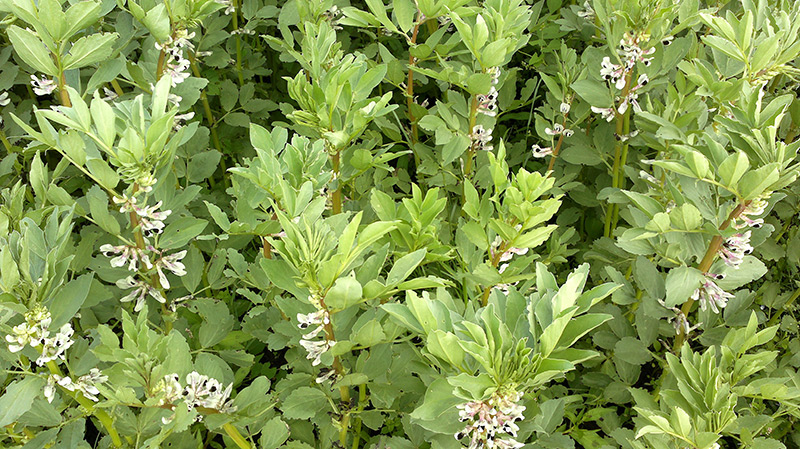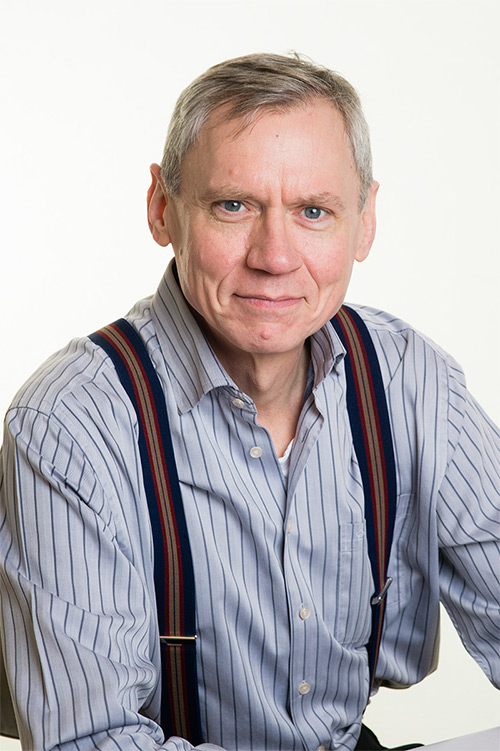Increasing productivity and sustainability of European plant protein production by closing the grain legume yield gap

Source: Frederick Stoddard
The potential of legumes to simultaneously contribute to several production, environmental, and nutritional objectives, is well known by science and policy. Legumes contribute to increased European protein self-sufficiency, diversification of cropping systems and farm businesses, reduction in fertilizer and pesticide use and greenhouse gas (GHG) emissions, enhancement of sustainable diets, and prevention of land degradation and biodiversity loss. Despite these widely recognized benefits, grain legume production in Europe is still low, partly due to inadequate investment in breeding, sub-optimal management practices, and gaps in farmers’ knowledge. To ensure food and nutritional security under climate change and reduce pressures on natural resources, the potential of legumes must be fully utilized.
The LegumeGap project will contribute in this direction by identifying the potential contribution of new cultivars, optimal management practices, and farmers’ knowledge in closing the yield and protein gaps, reducing the observed yield variability and EU-level protein shortfall, and optimizing the environmental performance of legume production in Europe. We will focus on two key representative legumes: faba bean and soya bean, due to their growing popularity, broad adaptability and high protein concentration in the seeds.

Source: Frederick Stoddard
A systems approach will be employed, where biophysical and socio-economic limitations, opportunities, and their interaction are taken into account. The innovative combination of different methodological approaches, including modelling, field experiments, a large scale farmer survey, and data analysis, will allow us to deliver more than their individual parts and to identify and recommend ways by which the potential of these two crops can be maximised.
Ten partners from eight countries will make use of their expertise in modelling, breeding, soil science, agronomy, geography and socio-economics to achieve in an interdisciplinary manner the objectives outlined below:
The innovation of LegumeGap lies in its synergistic methodological integration and its detailed focus on the breeding, management, and knowledge innovation gaps of the two most productive grain legumes, faba bean and soya bean. By covering all of the main European agroclimatic regions, as well as the pan-European level, LegumeGap will reveal environmental and socio-economic opportunities and constraints for enhancing the potential of grain legume production across Europe and point towards novel measures for resilient, legume-supported cropping systems, contributing to sustainable intensification under the challenge of global change.

Source: Frederick Stoddard
Prof Frederick Stoddard
University of Helsinki, Department of Agricultural Sciences, FINLAND
Prof Sonoko Bellingrath-Kimura
Humboldt University of Berlin, Faculty of Life Sciences, GERMANY
Dr Johann Bachinger
Leibniz Centre for Agricultural Landscape Research (ZALF), Research Area 2; Land Use and Governance, GERMANY
Dr Sylwia Lewandowska
Wrocław University of Environmental and Life Sciences, Faculty of Life Sciences and Technology, Department of Genetics, Plant Breeding and Seed Production, POLAND
Prof Ina Alsiņa
Latvia University of Life Sciences and Technologies (Latvia University of Agriculture), Institute of Soil and Plant Sciences, LETTLAND
Prof Christine Watson
Scotland’s Rural College (SRUC), Crop & Soil Systems Research Group, UK
Dr Etienne-Pascal Journet
INRA, Environment and Agronomy, FRANCE
Dr Nynke Schulp
Vrije Universiteit Amsterdam, Environmental Geography Group, Institute for Environmental Studies, NETHERLANDS
Dr Daniel Plaza-Bonilla
University of Lleida, Crop and Forest Sciences, SPAIN
Mr Sébastien Chatre
RAGT SEMENCES, RAGT2n, Research and Development, FRANCE
2022
Alletto, L., Celette, F., Drexler, D., Plaza-Bonilla, D., and Reckling, M. (2022). Editorial: crop diversification, a key pillar for the agroecological transition. Frontiers in Agronomy, 4.
Corrales, D. C., Schoving, C., Raynal, H., Debaeke, P., Journet, E-P., and Constantin, J. (2022). A surrogate model based on feature selection techniques and regression learners to improve soybean yield prediction in southern France. Computers and Electronics in Agriculture, 192, 106578.
Egamberdieva, D., Ma, H., Reckling, M., Omari, R. A., Wirth, S., and Bellingrath-Kimura, S. D. (2022). Interactive Effects of Biochar, Nitrogen, and Phosphorous on the Symbiotic Performance, Growth, and Nutrient Uptake of Soybean (Glycine max L.). Agronomy, 12 (1), 27.
Karges, K., Bellingrath-Kimura, Sonoko D., Watson, C. A., Stoddard, F. L., Halwani, M., and Reckling, M. (2022). Agro-economic prospects for expanding soybean production beyond its current northerly limit in Europe. European Journal of Agronomy, 133, 126415.
Lewandowska, S., Marczewski, K., Kozak, M., Ohkama-Ohtsu, N., Łabowska, M., Detyna, J., and Michalak, I. (2022). Impact of Freshwater Macroalga (Cladophora glomerata) Extract on the Yield and Morphological Responses of Glycine max (L.) Merr. Agriculture, 12 (5), 685.
Omari, R. A., Yuan, K., Anh, K. T., Reckling, M., Halwani, M., Egamberdieva, D., Ohkama-Ohtsu, N., and Bellingrath-Kimura, S.D. (2022). Enhanced Soybean Productivity by Inoculation With Indigenous Bradyrhizobium Strains in Agroecological Conditions of Northeast Germany. Frontiers in Plant Science, 12, 3276.
Porte, A., Lux, G., Lewandowska, S., Kozak, M., Feller, J., and Schmidtke, K. (2022). Does a Soybean Intercrop Increase Nodule Number, N Uptake and Grain Yield of the Followed Main Crop Soybean? Agriculture, 12 (4), 467.
2021
Bankina, B., Bimšteine, G., Kaņeps, J., Plūduma-Pauniņa, L., Gaile, Z., Paura, L., and Stoddard, F. L. (2021). Discrimination of leaf diseases affecting faba bean (Vicia faba). Acta Agriculturae Scandinavica, Section B — Soil & Plant Science 71 (5), 399-407.
Bērtiņš, M. Klūga, A., Dubova, L., Petrēvics, P., Alsiņa, I., and Vīksna, A. (2021). Study of Rhizobia Impact on Nutritional Element Concentration in Legumes. Proceedings of the Latvian Academy of Sciences. Section B. Natural, Exact, and Applied Sciences, 75 (6), 457-462.
Dziergowska, K., Lewandowska, S., Mech, R., Pol, M., Detyna, J., and Michalak, I. (2021). Soybean Germination Response to Algae Extract and a Static Magnetic Field Treatment. Applied Sciences, 11 (18), 8597.
Halwani, M., Reckling, M., Egamberdieva, D., Omari, R. A., Bellingrath-Kimura, S. D., Bachinger, J., and Bloch, R. (2021). Soybean Nodulation Response to Cropping Interval and Inoculation in European Cropping Systems. Frontiers in Plant Science 12, 1015.
Lewandowska, S., Łoziński, M., Marczewski, K., Kozak, M., and Schmidtke, K. (2021). Influence of priming on germination, development, and yield of soybean varieties. Open Agriculture, 5, 930-935.
Plūduma-Pauniņa, I. and Bimšteine, G. (2021). Sowing time effect on yield and quality of field beans in a changing meteorological situation in the Baltic region. Agronomy Research, 19 (4), 1873–1887.
Reckling, M., Ahrends, H., Chen, T-W., Eugster, W., Hadasch, S., Knapp, S., Laidig, F., Linstädter, A., Macholdt, J., Piepho, H-P., Schiffers, K., and Döring, T. F. (2021). Methods of yield stability analysis in long term field experiments. A review. Agronomy for Sustainable Development, 41 (2), 27.
2020
Griebsch, A., Matschiavelli, N., Lewandowska, S., and Schmidtke, K. (2020). Presence of Bradyrhizobium sp. under Continental Conditions in Central Europe. Agriculture, 10 (10), 446.
Muktadir, Md A., Adhikari, K. N., Merchant, A., Belachew, K. Y., Vandenberg, A., Stoddard, F. L., and Khazaei, H. (2020). Physiological and Biochemical Basis of Faba Bean Breeding for Drought Adaptation—A Review. Agronomy, 10 (9), 1345.
Reckling, M., Bergkvist, G., Watson, C. A., Stoddard, F. L., and Bachinger, J. (2020). Re-designing organic grain legume cropping systems using systems agronomy. European Journal of Agronomy, 112, 125951.
2019
Halwani, M., Reckling, M., Schuler, J., Bloch, R., and Bachinger, J. (2019). Soybean in No-Till Cover-Crop Systems. Agronomy, 9 (12), 883.